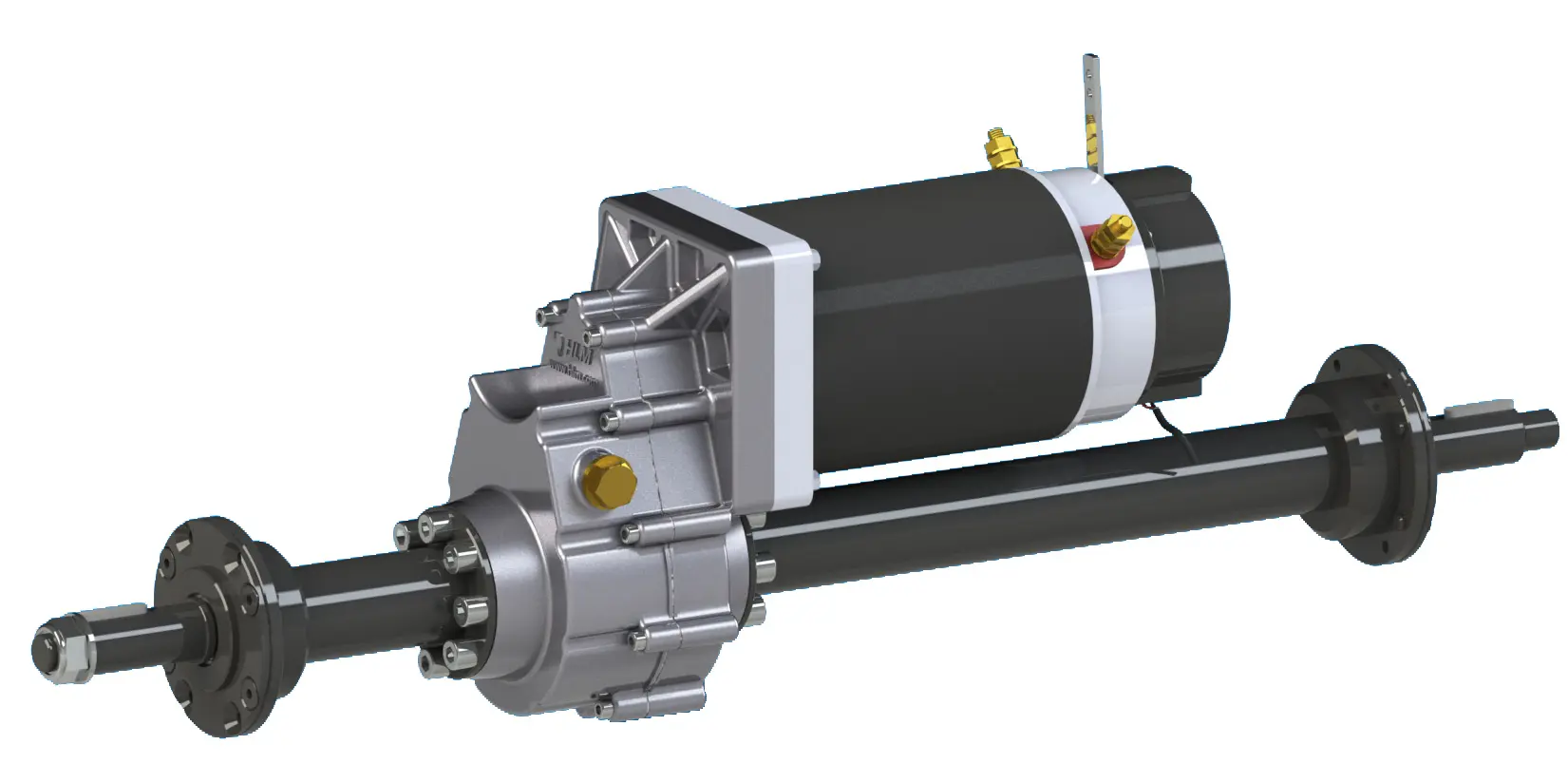In the rugged world of off-road driving, where vehicles are constantly pushed to their limits, every component plays a crucial role in determining performance and reliability. One such component that has gained significant attention for its benefits in off-road vehicles is the transaxle. A transaxle is an integrated assembly that combines the functions of a transmission, axle, and differential into a single unit. This innovative design offers numerous advantages that enhance the capabilities of off-road vehicles, making them more efficient, durable, and capable of tackling challenging terrains.
Improved Weight Distribution
One of the primary benefits of using a transaxle in off-road vehicles is its ability to improve weight distribution. By integrating the transmission, axle, and differential into a single unit, the transaxle allows for a more even distribution of weight across the vehicle. This is particularly beneficial for off-road vehicles, as uneven weight distribution can lead to reduced traction and stability on uneven surfaces. A well-balanced weight distribution ensures that the vehicle maintains optimal traction, allowing it to navigate through mud, rocks, and other challenging terrains with ease. Additionally, this balanced weight distribution enhances the vehicle’s overall handling and stability, providing a smoother and more controlled driving experience
Compact Design and Space Efficiency
The compact design of a transaxle is another significant advantage, especially for off-road vehicles where space is often at a premium. By combining multiple components into a single unit, the transaxle takes up less space compared to traditional separate transmission and axle setups. This allows for a more streamlined and compact vehicle design, which is crucial for off-road vehicles that need to maneuver through tight spaces and narrow trails. The compactness of the transaxle also provides more room for other essential components, such as suspension systems and fuel tanks, without compromising their size or performance. This space efficiency is particularly beneficial for smaller off-road vehicles, where maximizing interior space and minimizing the vehicle’s footprint is essential
Enhanced Efficiency and Performance
Transaxles are known for their improved efficiency, which translates into better performance for off-road vehicles. The integrated design of the transaxle reduces the number of moving parts and connections, leading to less friction and power loss. This means that more of the engine’s power is effectively transferred to the wheels, resulting in enhanced acceleration and overall performance. Off-road vehicles often require quick power delivery and smooth gear transitions to maintain momentum and control on various terrains, and the transaxle’s efficient power transfer helps achieve this. Additionally, the improved efficiency can also lead to better fuel economy, which is a significant advantage for off-road vehicles that often consume more fuel due to their rugged usage
Simplified Drivetrain Layout and Reduced Complexity
The transaxle’s integrated design simplifies the drivetrain layout by eliminating the need for separate driveshafts and other connecting components. This results in a less complex drivetrain system, which is beneficial for off-road vehicles in several ways. Firstly, it reduces the potential points of failure, enhancing the vehicle’s reliability and durability. Off-road vehicles are subjected to harsh conditions and heavy-duty use, and a simplified drivetrain layout minimizes the chances of components failing or breaking during operation. Secondly, the reduced complexity makes maintenance and repairs easier and more cost-effective. With fewer components to inspect and replace, owners can save time and money on maintenance, allowing them to focus more on enjoying their off-road adventures
Better Ground Clearance and Suspension Performance
Off-road vehicles require ample ground clearance to navigate over obstacles and uneven terrain. The compact design of the transaxle allows for a larger suspension stroke, which in turn provides better ground clearance. This enables the vehicle to clear rocks, logs, and other obstacles more easily, reducing the risk of damage to the undercarriage and improving the vehicle’s overall off-road capabilities. Additionally, the improved suspension performance allows for better absorption of shocks and impacts, providing a more comfortable ride and protecting the vehicle’s components from excessive wear and tear
Enhanced Traction and Handling
The transaxle’s ability to improve weight distribution and provide efficient power transfer directly contributes to enhanced traction and handling for off-road vehicles. With better weight distribution, the vehicle’s tires maintain optimal contact with the ground, ensuring maximum traction on slippery or uneven surfaces. This is crucial for off-road driving, where traction can be easily compromised by mud, loose rocks, or steep inclines. Furthermore, the transaxle’s integrated differential allows the wheels to rotate at different speeds, which is particularly beneficial when navigating turns or uneven terrain. This feature helps maintain traction and control, preventing the vehicle from getting stuck or losing balance
Durability and Reliability
Off-road vehicles are built to withstand harsh conditions and heavy-duty use, and the transaxle’s design contributes to their overall durability and reliability. The integrated components of the transaxle are housed in a single unit, which provides better protection against dirt, water, and other debris that can damage separate components. This protection helps extend the lifespan of the transaxle and reduces the likelihood of component failure due to exposure to the elements. Additionally, the reduced complexity of the drivetrain system, as mentioned earlier, further enhances the vehicle’s reliability, ensuring that it can withstand the rigors of off-road driving without frequent breakdowns
Conclusion
The use of a transaxle in off-road vehicles offers a multitude of benefits that significantly enhance their performance, reliability, and overall driving experience. From improved weight distribution and compact design to enhanced efficiency, traction, and durability, the transaxle plays a crucial role in enabling off-road vehicles to tackle challenging terrains with ease and confidence. As off-road enthusiasts continue to push the boundaries of their vehicles, the transaxle remains an essential component, providing the necessary capabilities to conquer even the most demanding off-road adventures. Whether it’s navigating through muddy trails, climbing steep hills, or maneuvering through tight spaces, the transaxle’s innovative design ensures that off-road vehicles remain at the top of their game, delivering exceptional performance and reliability in every challenging situation.
Post time: Jan-08-2025


